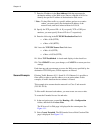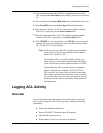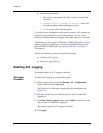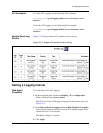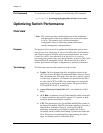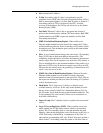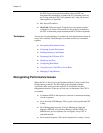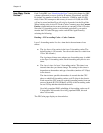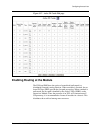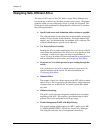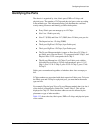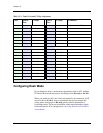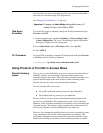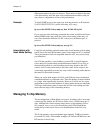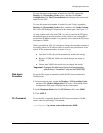
13-22 User Guide for the Avaya P580 and P882 Multiservice Switches, v6.1
Chapter 13
How Many Cache
Entries?
Each F-chip/PRE (see “Identifying the Ports” later in this chapter for PRE
column explanation) reserves space for IP unicast, IP multicast, and IPX.
By default, the number of entries are limited to 15,000 for each (45,000
total). If the CPU attempts to add an entry in excess of 15,000, the L3FE
will not be stored and that Flow will only be forwarded via the Slow Path.
When looking at the Active FE Cache (Cache Contents) page, the Current
Entries column indicates how many entries are currently in the L3F cache.
Since the L3 forwarding cache is recalculated periodically, you need to
monitor the FE Cache Web page on the switch Web Agent found by
selecting the following:
Routing > L3 Forwarding Cache > Cache Contents
Layer 3 forwarding entries live for a time that is the maximum of two
timers:
■ The Age Interval for entries in the layer 3 forwarding cache (The
default setting is 120 seconds. You can set this timer to a value from
120 to 360 seconds.)
The Age interval timer starts when a new forwarding entry is added
to the layer 3 forwarding cache. Each forwarding entry has its own
timer.
■ The chassis timer for layer 3 forwarding entries. This timer is an
internal timer that you cannot change. The setting for this timer is
dependent on the number and type of modules (number of F-Chips)
in the chassis.
The chassis timer specifies the number of seconds that the CPU
takes to rebuild all forwarding caches on all F-chips in the chassis.
Each second, the CPU removes expired forwarding entries from one
protocol branch (IP-UNI, IP-Multi, or IPX) of the forwarding cache
on one F-Chip and then rebuilds the branch.
On a fully populated P882, rebuilding all forwarding caches on all
F-chips takes 400 seconds. On a fully populated P580, this task
takes 160 seconds.
The FE Cache page displays as shown below.



